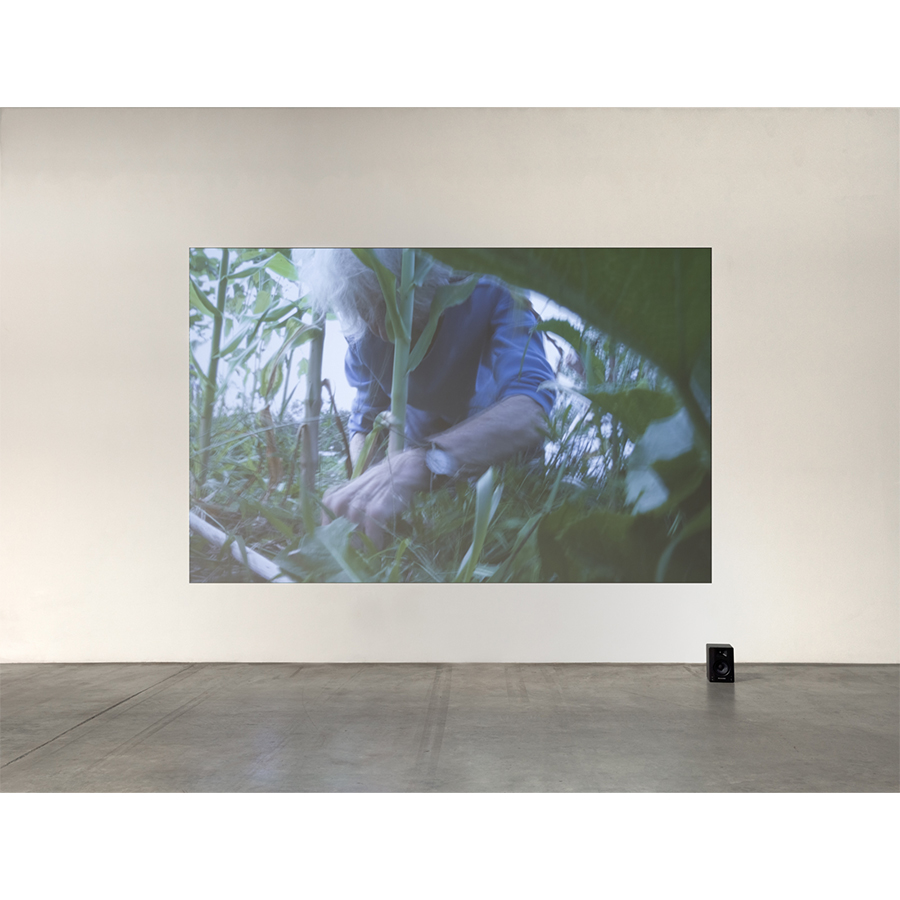
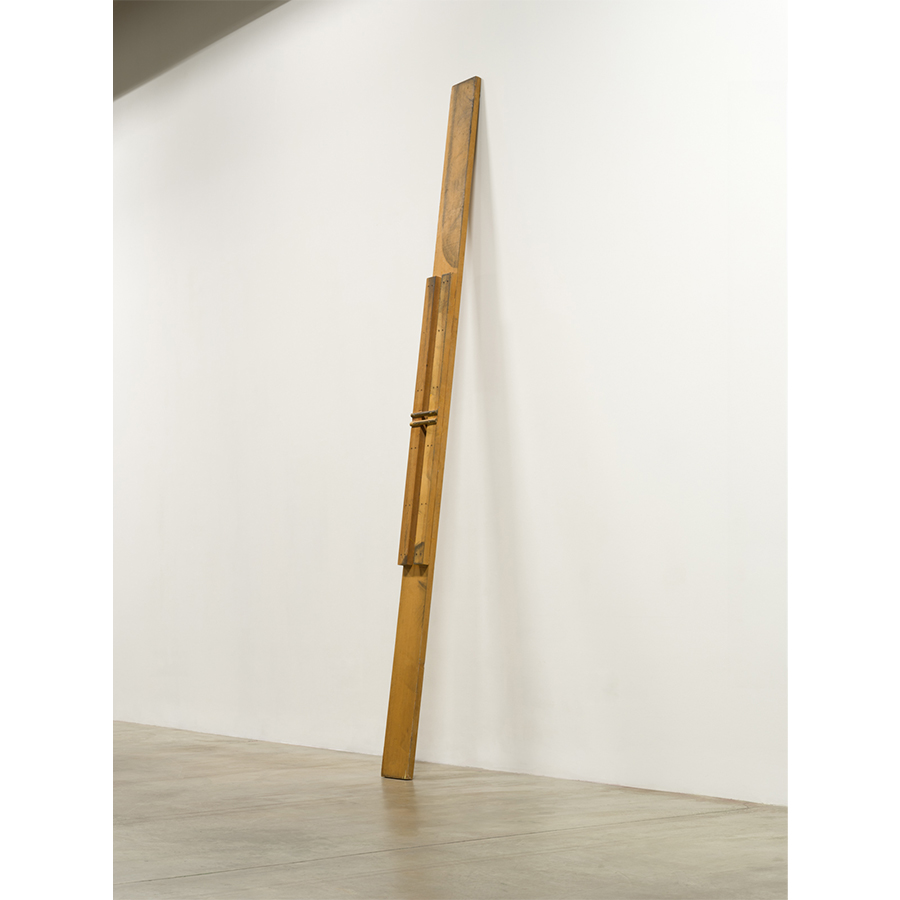
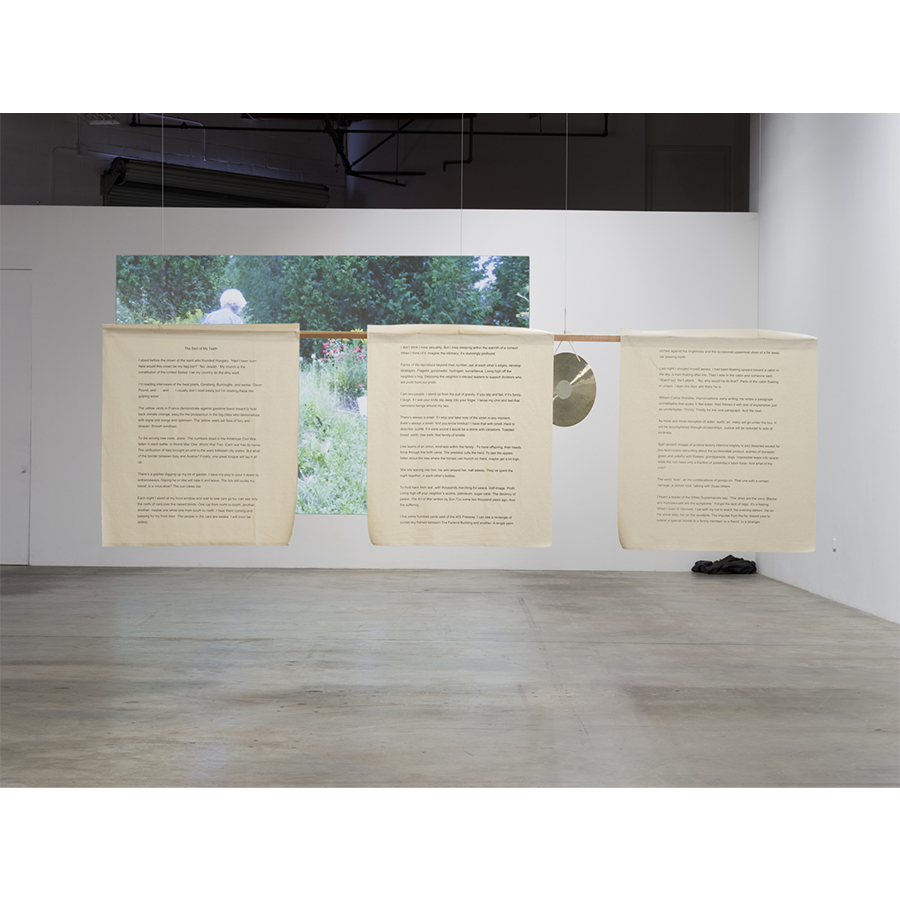
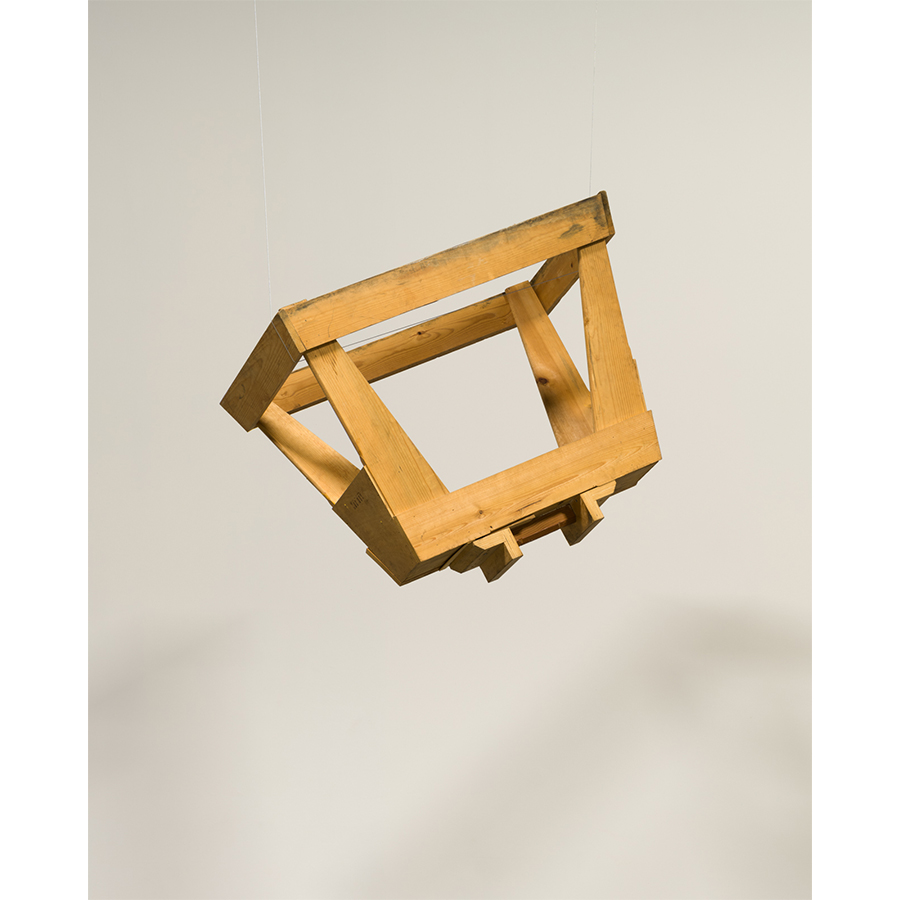
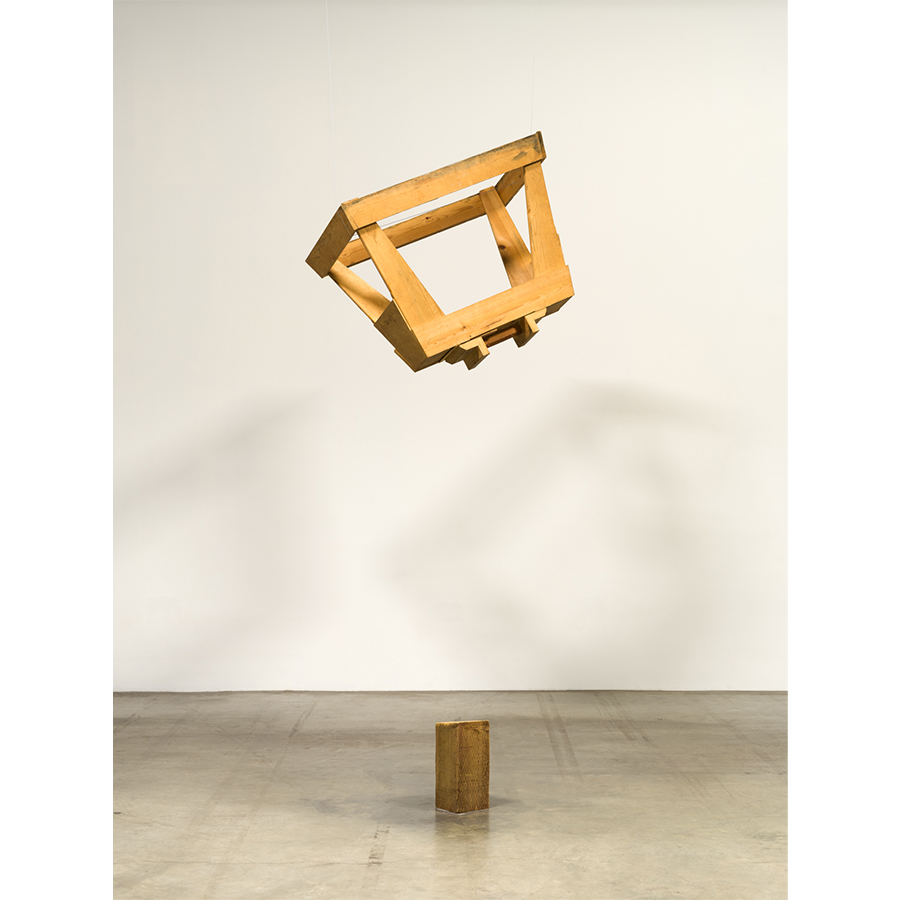
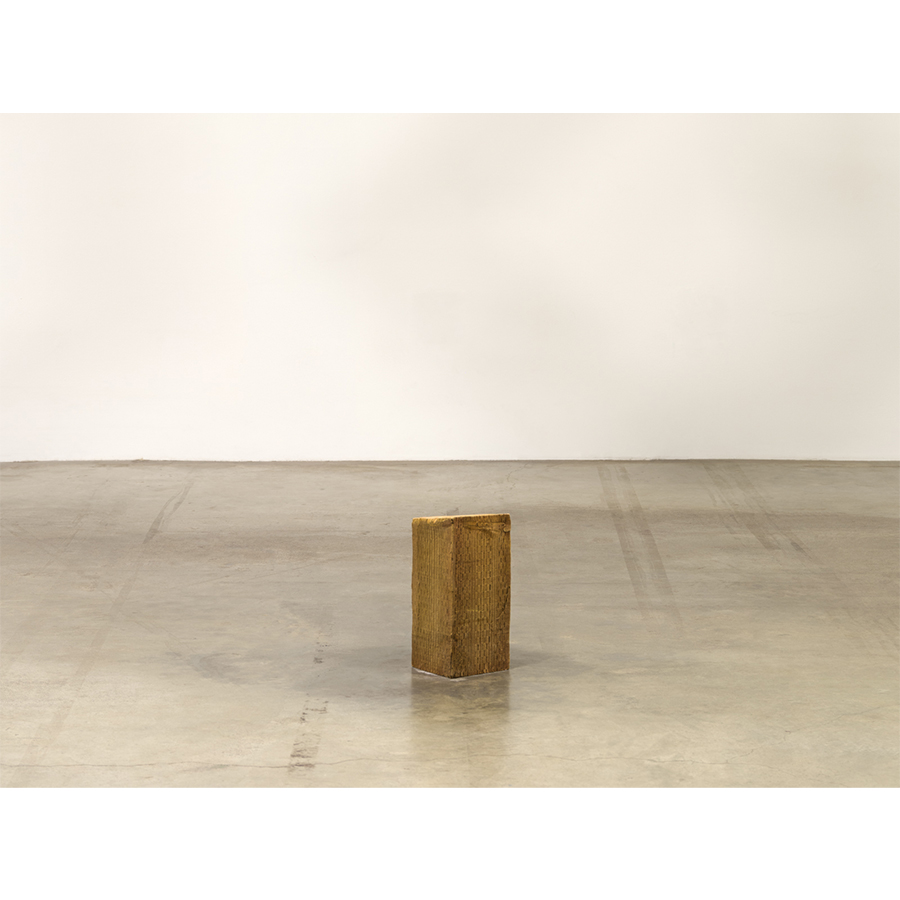
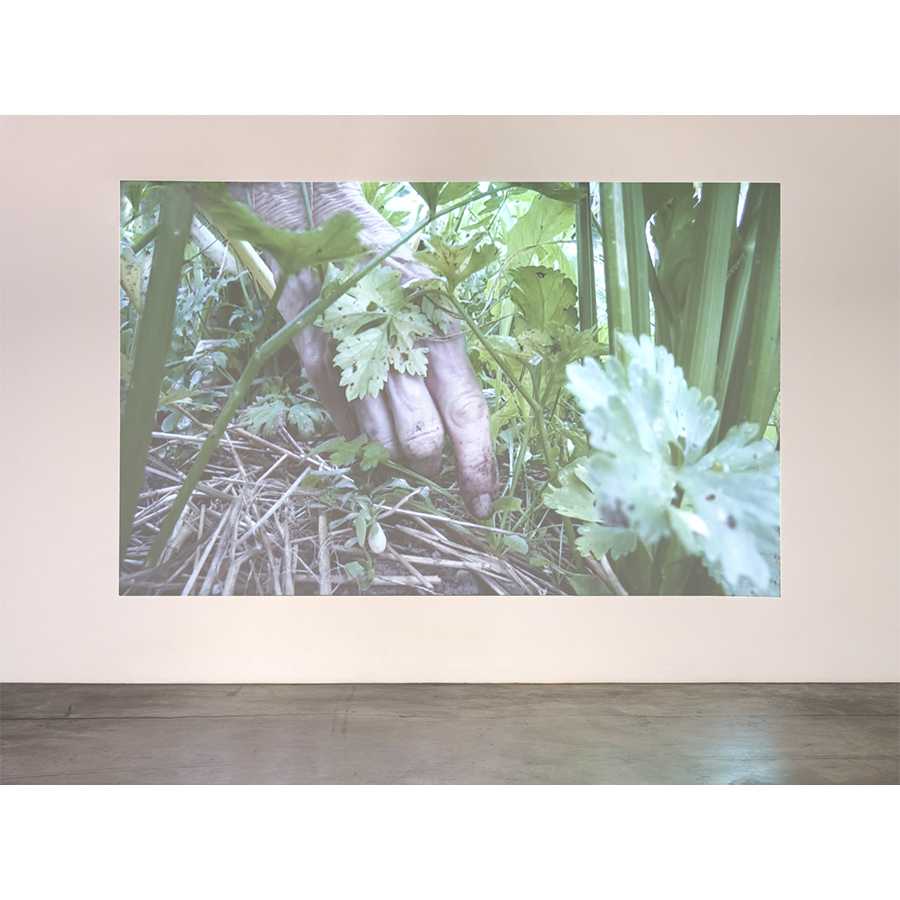
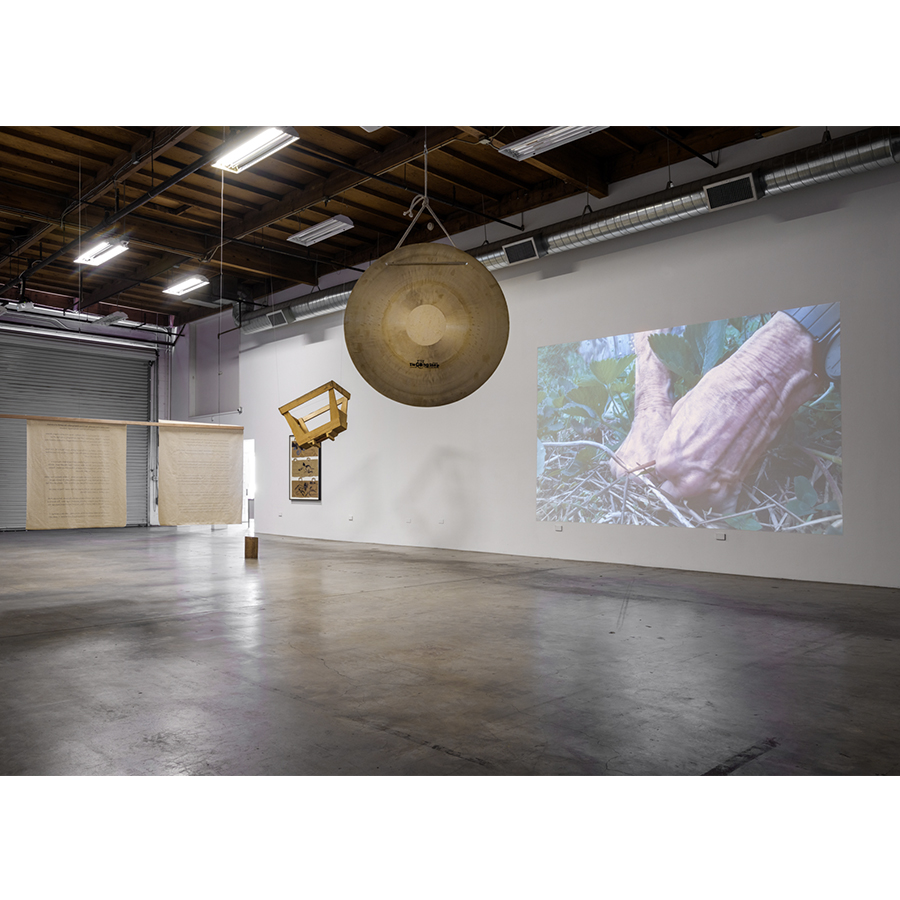
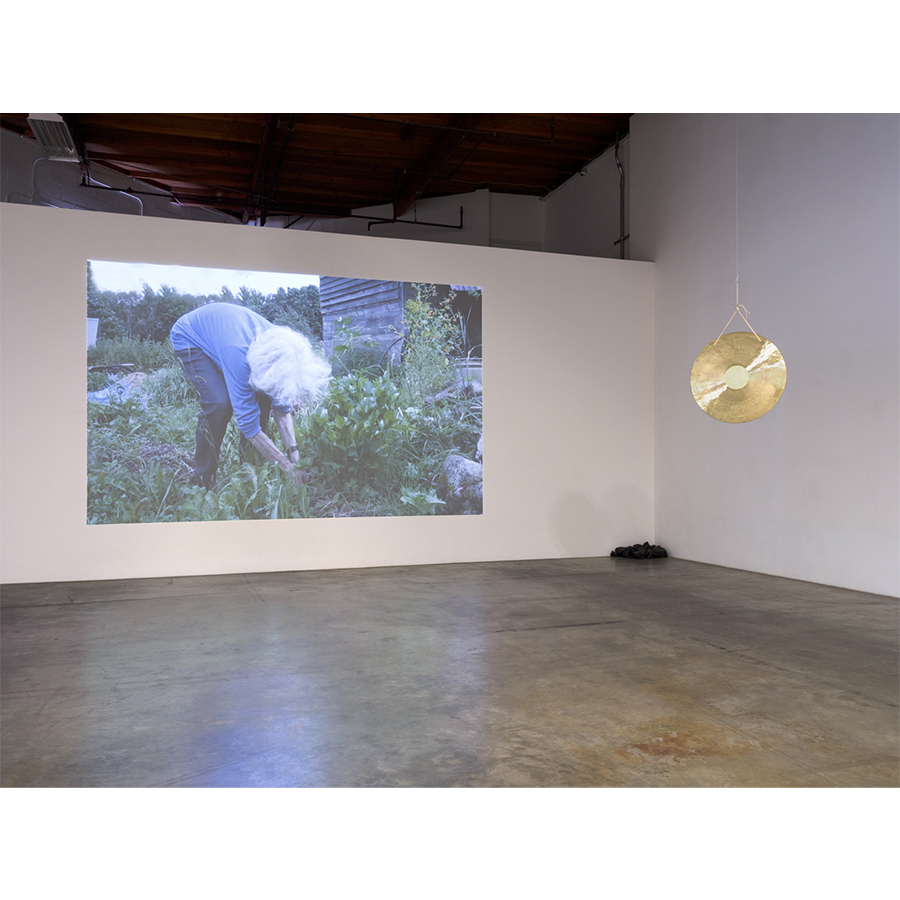
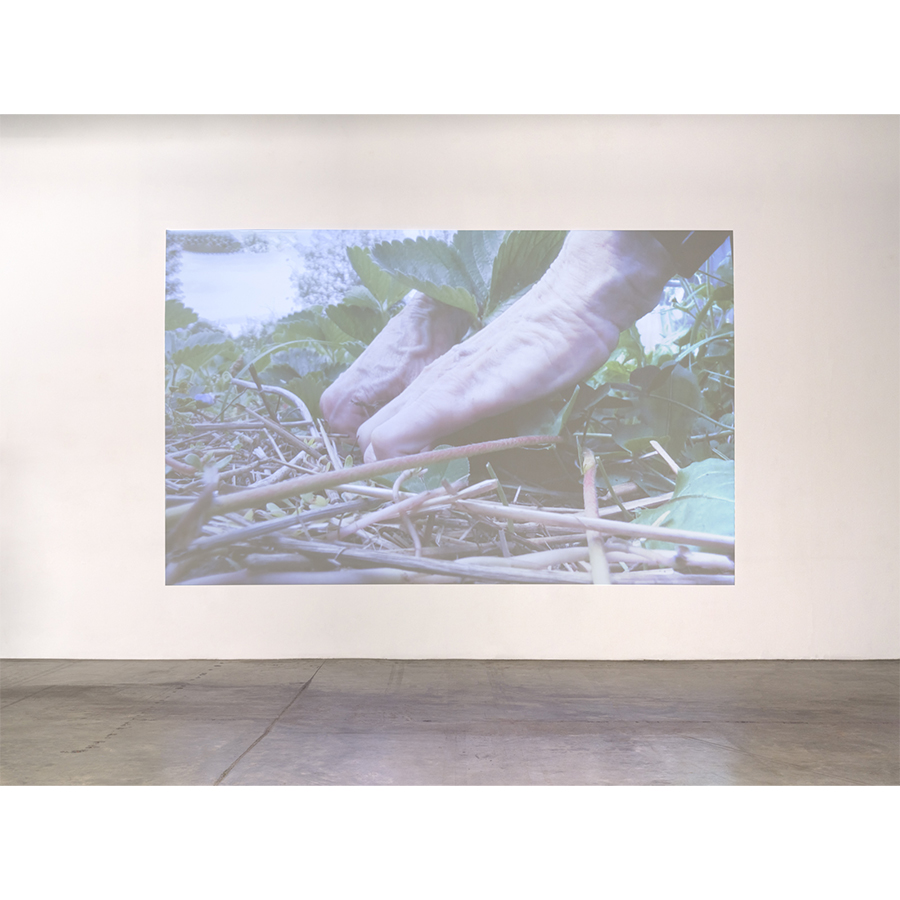
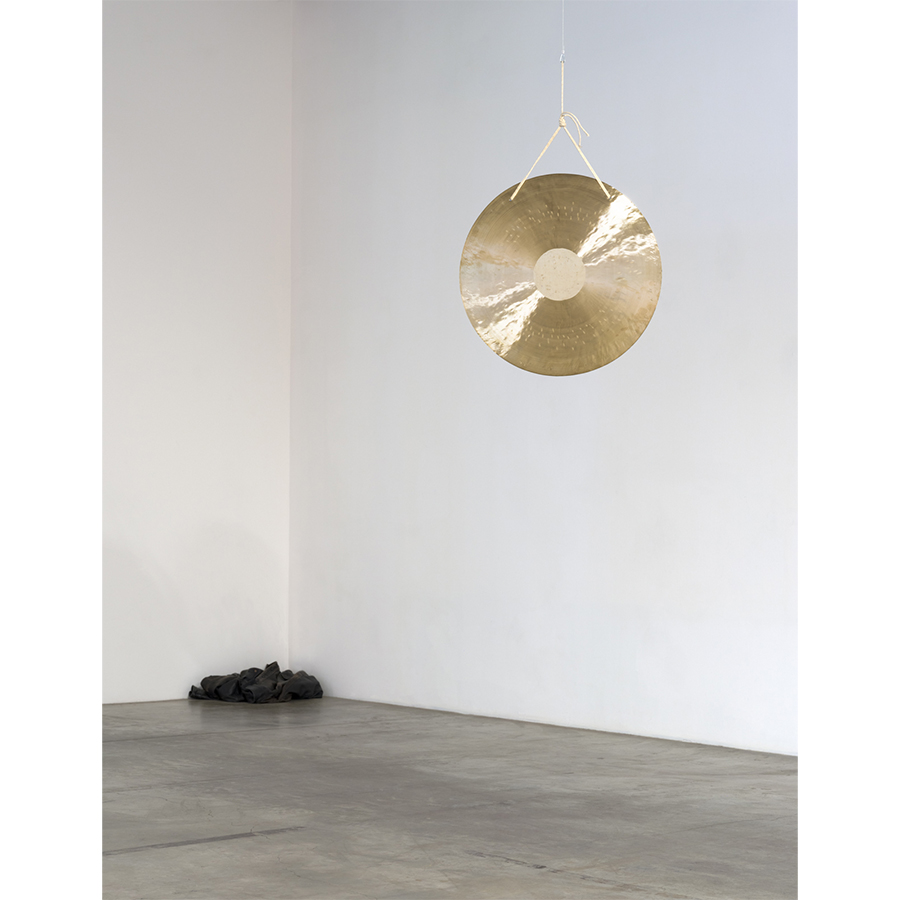
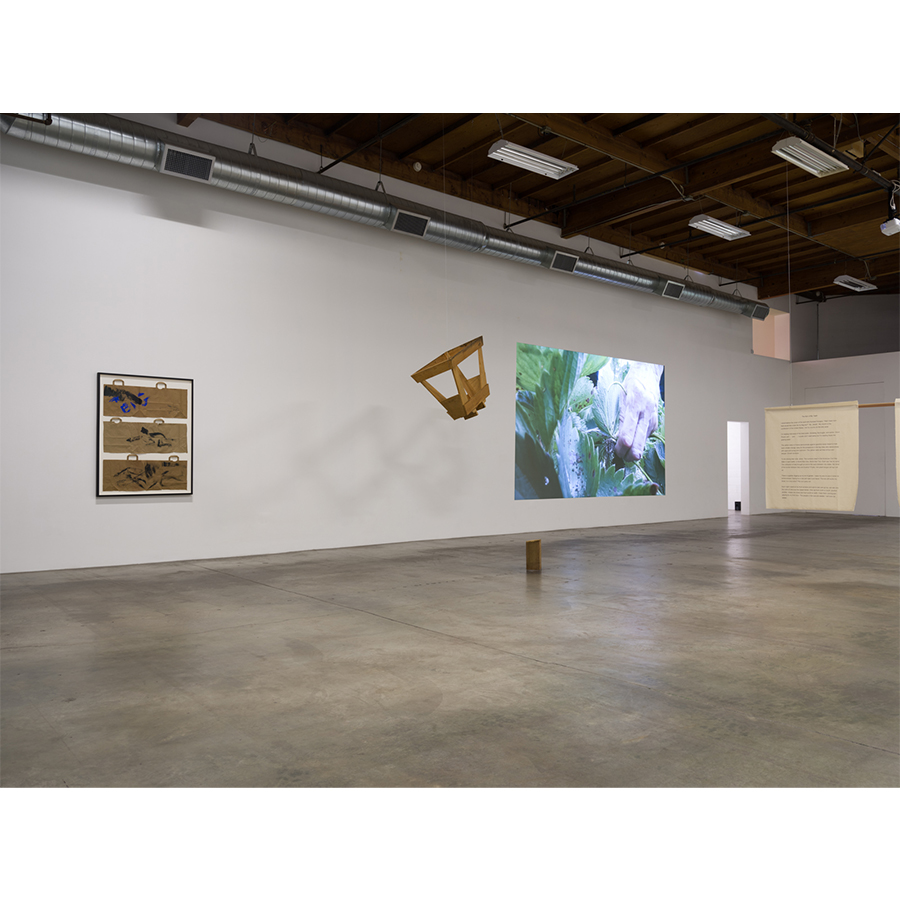
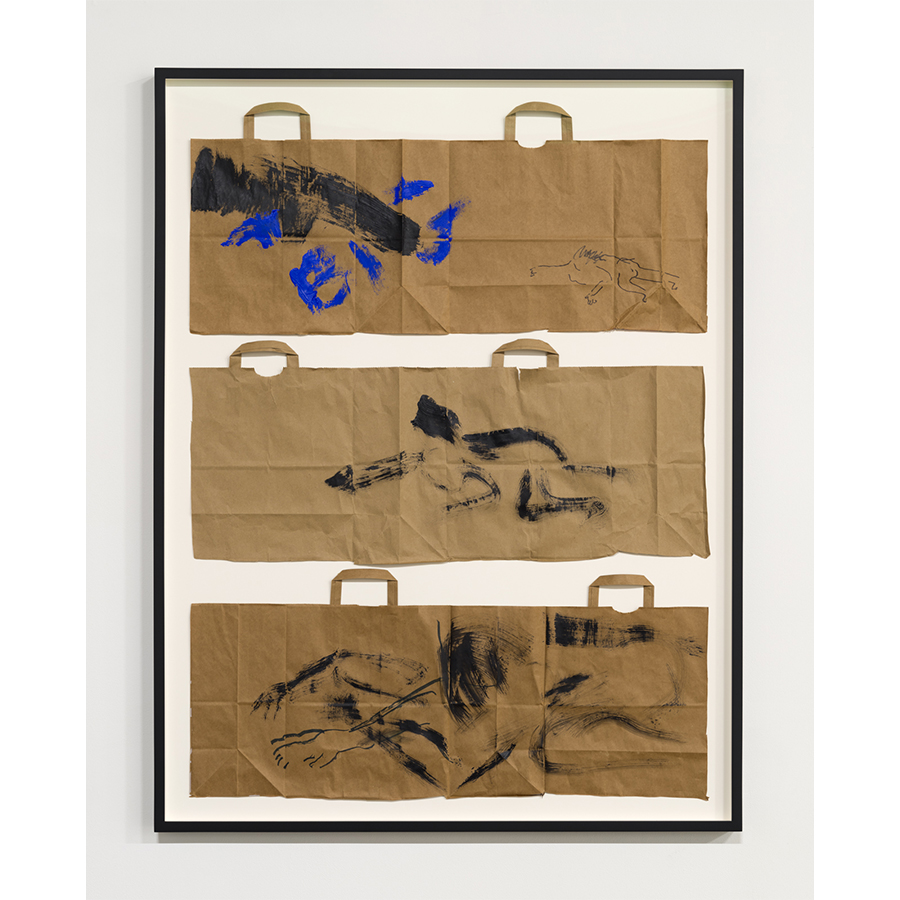
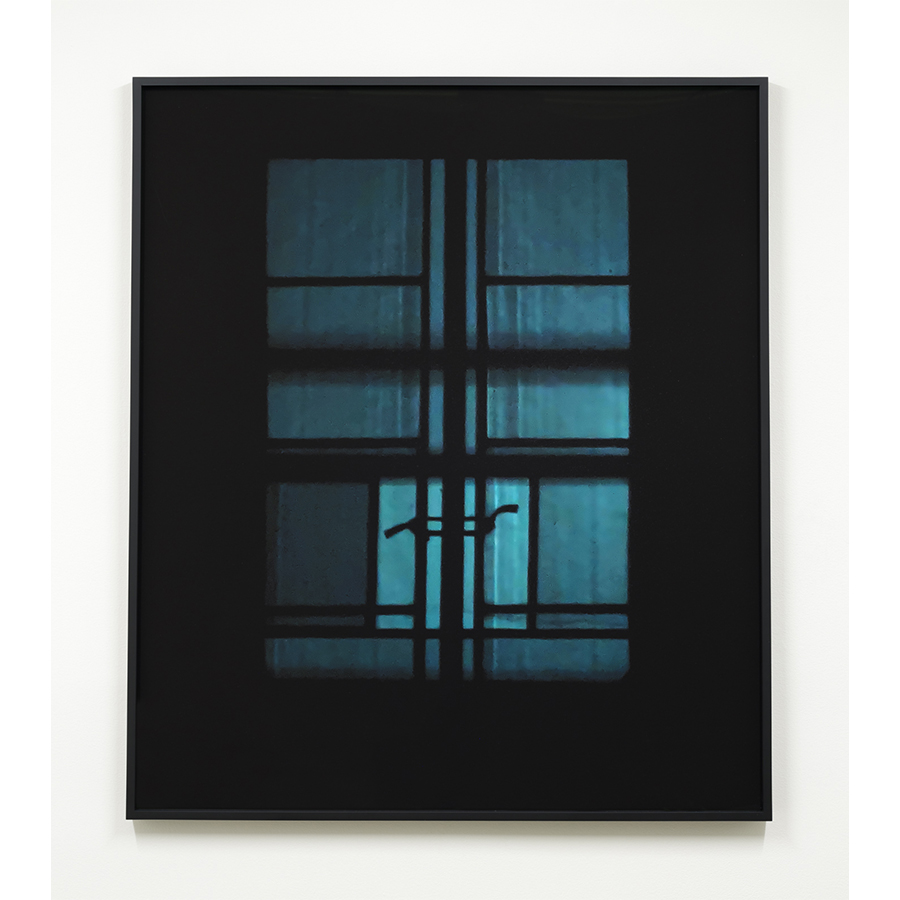
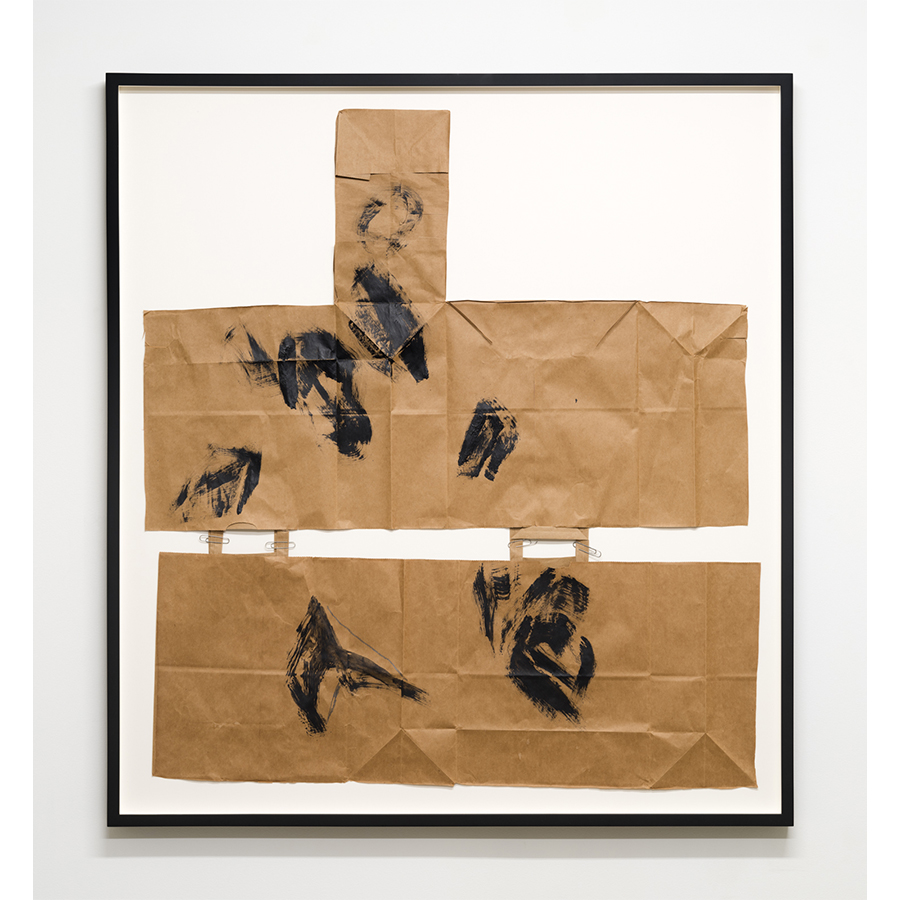
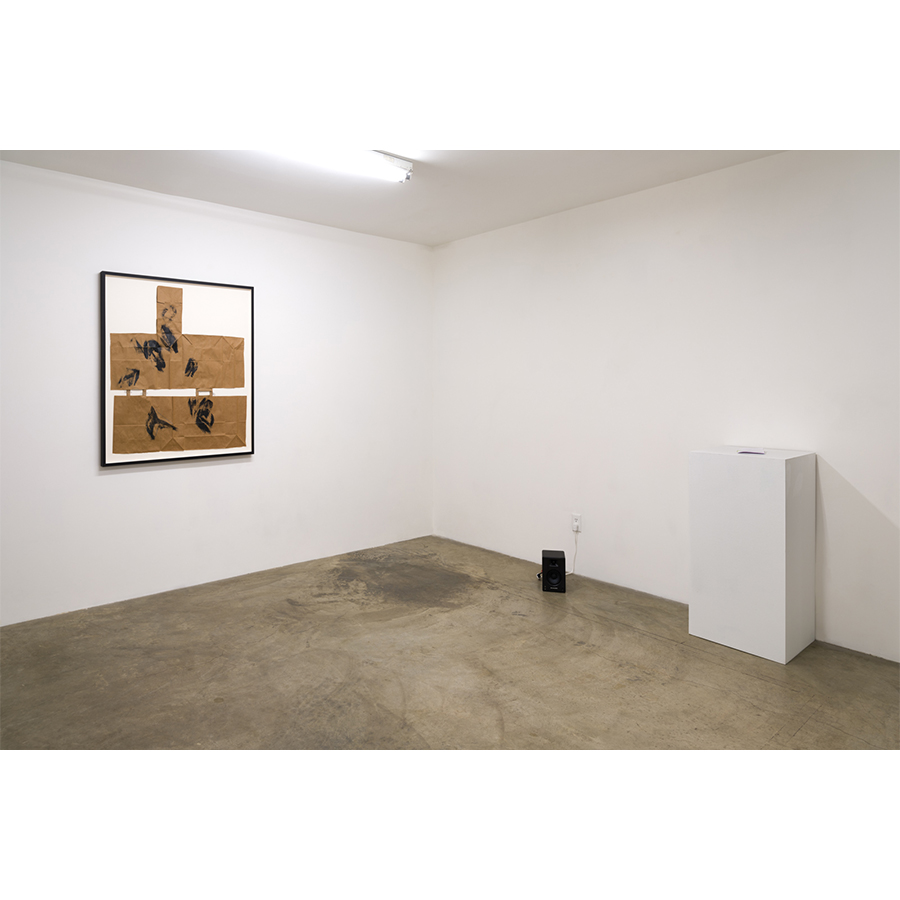
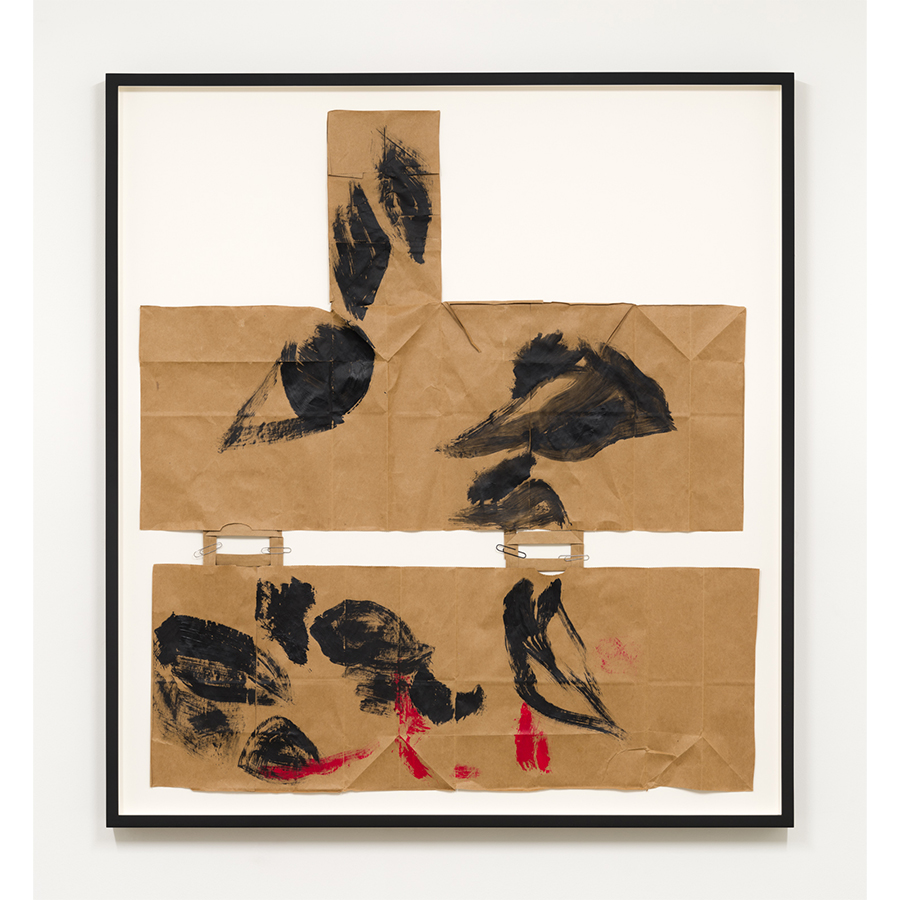
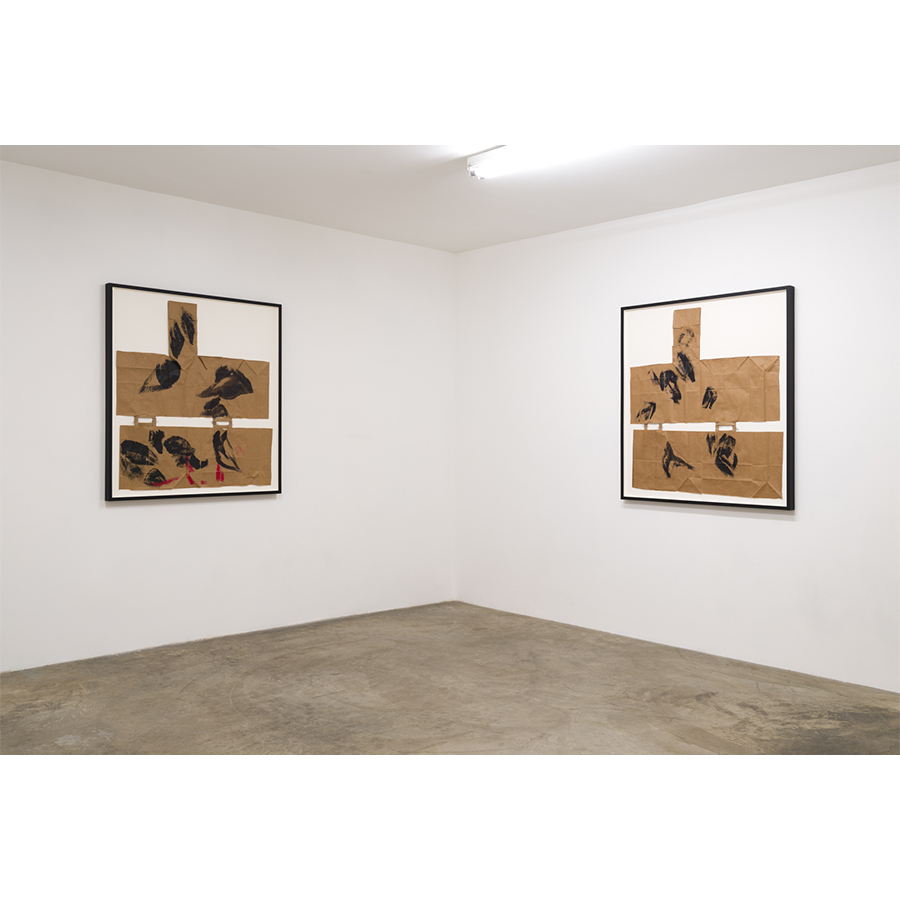
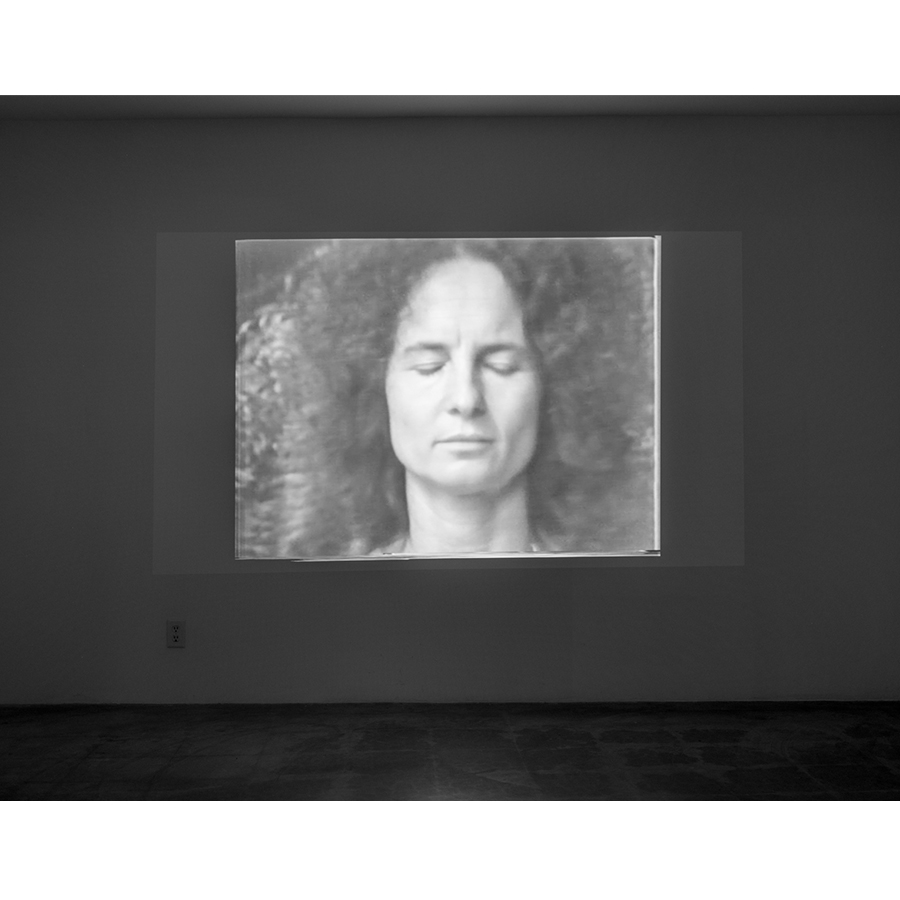
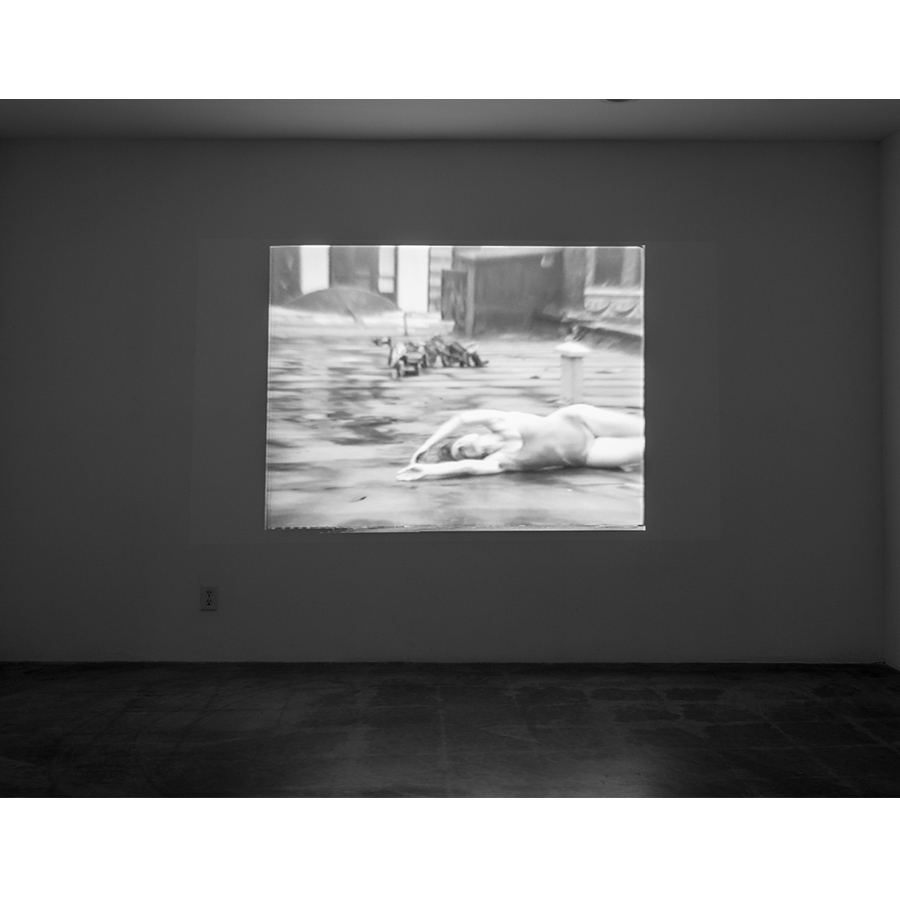
Simone Forti
An Other Pretty Autumn
April 16 - May 21, 2022
Opening Reception: April 16, 2-6pm
There is an enchantingly awkward feeling that is hard to avoid when surveying Simone Forti’s body of work. To consider the works presented in An Other Pretty Autumn, is to consider her lifetime of work, as if they are one movement that is still in continuity. In this exhibition there is an undeniable weight and lightness to what is being shown, with the container of the exhibition being a new thirteen page poem, Another Pretty Autumn, bringing the movement of her life work to the quiet and gentle stillness of the mind.
In the center of the main gallery is another poem floating on silk screened canvases, The Skin of my Teeth (2018), addressing the political precarity of the piled up world in relation to the beat poets and Forti’s garden. This work, along with a suspended installation of See Saw (1961) and the new found work That Block (2022), shown on the ground, confront the viewer as they enter the space. The assembled effect of these is the centrifugal force of three milestones in a lifetime's career, pushing the viewer out towards the large projections moving on the walls and a recording of Another Pretty Autumn being read by Emily Mast, Carmela Hermann Dietrich, and Julia Holter.
Before the pandemic in 2019, Forti asked Jason Underhill to come to Vermont and make a video of her weeding. Within the large room of the gallery there are three projections showing these never seen videos, Weeding: Steve and Lisa's Garden 1 & 2 and Weeding: Simone’s Garden. The videos are playfully shot low to the ground from the perspective similar to a cat, showing tight shots of Forti’s hands in the dirt amongst bright green blades of grass. Weeding is a meditative practice for the artist, enjoying the tension and release of the roots from the ground, that she has cultivated since living at Mad Brook Farms in Vermont in the early 1980s. Movement comes from the root meue, which means to push away, and in this way this practice can be thought of as a collaboration with the Earth.
Early in the pandemic, when she didn’t have paper, Forti used leftover paper bags from Trader Joe’s to create a series of paintings with acrylic, applied like paste. The bags become houses, sometimes with a chimney, the thickness of the paper seeming to recall both floors and walls, with the motif of a crawling figure moving amongst smoldering rocks. The hearth and its limitations are brought into question with the imperative to continue moving, even as a crawl, and possibly as an ashen phoenix. These works, the two Figure Bag Drawings and one Fire Bag Drawings (all 2020), have never been exhibited in the United States.
Statues (1977), a collaboration with Anne Tardos, shows Forti’s figure performing some of her now well known movements such as Sleepwalkers and Swing Bear, on a black and white backdrop of her NYC apartment and rooftop. Shown in a separate room, Statues is seminal in that it is one of the first video works of Forti, perfectly encapsulating her examination of the fluidity of movement with body and video in contrast to the idea of the statuesque. Einstein imagined himself as pure light in order to understand space-time, and in this way we might respect that Forti has imagined herself as pure movement (space-time) in order to understand lightness.
With Forti’s specific contemplation of autumn, the smoldering of boulders and mystical birds, and the reflection on roots being pulled from the Earth, the awareness of her own mortality resounds in the exhibition, preceding and succeeding the sound of the gong installed in juxtaposition with her own leather jacket. Not simply as a memento mori, but as it speaks to the eternal movement of sound (a big sound). Another Pretty Autumn itself moves in spirals and occasional repetitions, with a diaristic observation of her recent days and thoughts. The forms of the stanzas could be the movement of falling leaves, towards a stillness unto the earth, before the wind agitates them again. Forti’s current fascination with reading and writing, is perhaps in becoming the gentlest form of movement a human can achieve.
Simone Forti (b. 1935) is a dancer/choreographer/artist/writer based in Los Angeles. Born in Florence, Italy, Forti emigrated with her family to Los Angeles in 1938. In 1955 she began dancing with Anna Halprin, who was doing pioneering work in dance improvisation. After four years of working with Halprin in Northern California, Forti moved to New York where she studied composition at the Merce Cunningham Studio with educator/musicologist Robert Dunn. In these classes, which focused on the work of John Cage, she met and began working informally with choreographers including Trisha Brown, Yvonne Rainer, and Steve Paxton. In the spring of 1961, Forti presented a full evening of pieces she called Dance Constructions at Yoko Ono’s loft studio. These pieces proved to be influential in both the fields of dance and visual arts. Over the years Forti returned to improvisation, including extensive collaborations with musicians like Charlemagne Palestine and Peter Van Riper. Since the early 1980s, she has been practicing a form wherein movement and words spontaneously weave together. Taking the news as her subject matter, Forti calls these performances News Animations.
An Other Pretty Autumn is Simone Forit's fifth solo-exhibition with The Box, with the first in 2009. Forti has appeared in venues including the Museum of Contemporary Art, Los Angeles; The Louvre Museum, Paris; and Danspace, New York. She has had solo exhibitions at Centro Pecci, Prato (2021); Galleria Raffaela Cortese, Milan (2018); Kunsthaus Zurich, Zurich (2017); Kunstmuseum, Bonn (2016); Hammer Museum, Los Angeles (2015); as well as her first major retrospective at the Museum der Moderne, Salzburg, Austria in 2014. Forti’s artwork is in collections of The Museum of Modern Art, New York; the Stedelijk Museum, Generali Foundation, and The Whitney Museum of American Art. Forti has received various awards including a Guggenheim Fellowship in dance in 2005 and a Yoko Ono Lennon Courage Award for the Arts in 2011.